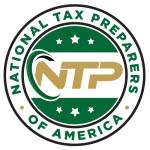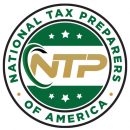
Tax returns are filed to the IRS by individual tax payers as well as corporations. But some key differences like the dividend taxes set the corporate tax payers apart. A *dividend tax* is a *tax* imposed by a jurisdiction on *dividends* paid by a corporation to its shareholders (stockholders). A dividend tax rate is applied based on the income made.
For tax purposes, there are two kinds of dividends: qualified and nonqualified (sometimes called “ordinary”), each with different tax implications that impact an investor’s net return.
·A qualified dividend is a dividend that falls under capital gains tax <nationaltaxpreparersofamerica.com/a-quick-guide-to-capital-tax-rate/> rates that are lower than the income tax <www.investopedia.com/terms/i/incometax.asp>.
The tax rate on qualified dividends is 0%, 15% or 20%, depending on your taxable income and filing status.
1.The tax rate on qualified dividends for investors that have ordinary income taxed at 10% or 12% is 0%.
2.The tax rate on qualified dividends is capped at 20%, which is for individuals in the 35% or 37% tax brackets <www.investopedia.com/terms/t/taxbracket.asp>.
Qualified dividends come with the tax advantage of a lower tax rate. Three things usually determine whether a dividend is qualified:
*1.**It is paid by a U.S. corporation or qualifying foreign entity.*
*2.**It is actually a dividend in the eyes of the IRS-*
Some things don’t count as dividends, despite what they might be called, including:
-Premiums an insurance company kicks back
-Annual distributions credit unions make to members
-“Dividends” from co-ops or tax-exempt organizations
*3.**You held the underlying security for long enough.*
If you own the security for more than 60 days during the 121-day period that began 60 days before the ex-dividend date, the dividend is usually qualified.
·Tax rates for ordinary dividends <www.investopedia.com/terms/o/ordinary-dividends.asp> (typically those that are paid out from most common or preferred stocks) are the same as standard federal income tax rates, or 10% to 37% for tax year 2020.
The tax rate on nonqualified dividends the same as your regular income tax bracket. In both cases, people in higher tax brackets pay a higher dividend tax rate.
Those that pay income tax rates greater than 12% and up to 35% (for ordinary incomes of up to $434,551) have a 15% tax rate on qualified dividend.
Dividend tax forms a vital part of tax returns for businesses, small and big, and even for major corporations. Bigger the business, bigger the amount of work to be done, hence bigger is the paperwork and bigger the chance of committing a mistake. Using professional tax preparing services like the ones offered by the National Tax Preparers of America, you make sure to avoid all follies and file accurate, effortless tax returns.
Tax returns are filed to the IRS by individual tax payers as well as corporations. But some key differences like the dividend taxes set the corporate tax payers apart. A *dividend tax* is a *tax* imposed by a jurisdiction on *dividends* paid by a corporation to its shareholders (stockholders). A dividend tax rate is applied based on the income made.
For tax purposes, there are two kinds of dividends: qualified and nonqualified (sometimes called “ordinary”), each with different tax implications that impact an investor’s net return.
·A qualified dividend is a dividend that falls under capital gains tax <nationaltaxpreparersofamerica.com/a-quick-guide-to-capital-tax-rate/> rates that are lower than the income tax <www.investopedia.com/terms/i/incometax.asp>.
The tax rate on qualified dividends is 0%, 15% or 20%, depending on your taxable income and filing status.
1.The tax rate on qualified dividends for investors that have ordinary income taxed at 10% or 12% is 0%.
2.The tax rate on qualified dividends is capped at 20%, which is for individuals in the 35% or 37% tax brackets <www.investopedia.com/terms/t/taxbracket.asp>.
Qualified dividends come with the tax advantage of a lower tax rate. Three things usually determine whether a dividend is qualified:
*1.**It is paid by a U.S. corporation or qualifying foreign entity.*
*2.**It is actually a dividend in the eyes of the IRS-*
Some things don’t count as dividends, despite what they might be called, including:
-Premiums an insurance company kicks back
-Annual distributions credit unions make to members
-“Dividends” from co-ops or tax-exempt organizations
*3.**You held the underlying security for long enough.*
If you own the security for more than 60 days during the 121-day period that began 60 days before the ex-dividend date, the dividend is usually qualified.
·Tax rates for ordinary dividends <www.investopedia.com/terms/o/ordinary-dividends.asp> (typically those that are paid out from most common or preferred stocks) are the same as standard federal income tax rates, or 10% to 37% for tax year 2020.
The tax rate on nonqualified dividends the same as your regular income tax bracket. In both cases, people in higher tax brackets pay a higher dividend tax rate.
Those that pay income tax rates greater than 12% and up to 35% (for ordinary incomes of up to $434,551) have a 15% tax rate on qualified dividend.
Dividend tax forms a vital part of tax returns for businesses, small and big, and even for major corporations. Bigger the business, bigger the amount of work to be done, hence bigger is the paperwork and bigger the chance of committing a mistake. Using professional tax preparing services like the ones offered by the National Tax Preparers of America, you make sure to avoid all follies and file accurate, effortless tax returns.



